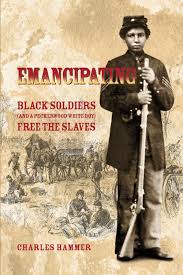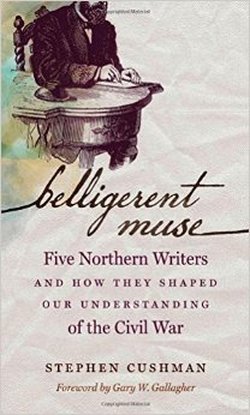
Charles Hammer
Createspace Publishing, 2012, 256 pp. + 5 pp. Introduction, $9.99
ISBN: 9781480089594
There has always been a plethora of Civil War fiction throughout the study and most of them offer something new to the genre. Every book has a different spin, every book a different approach. This is what makes both fiction and nonfiction difficult to deal with the realm of Civil War. However, there is a trend among Civil War fiction writers of showing families torn apart by their allegiances. In most works, there is the northern boy who wants to aid in states rights and goes to fight for the South but this work is entirely different. At its heart, it is a love story intertwined with the complexity of Romeo and Juliet which is alluded to throughout the text. What this raw work has done is create an atmosphere of question and realism accompanied by a subject not usually seen in Civil War fiction.
Charles Hammer was born in Tulsa, Oklahoma in 1934 amidst rabid segregation. He talks in his biography of attending segregated schools with details of local history glossed over in class including the Tulsa race riot ten years before he was born. When he attended the University of Tulsa, it had been recently integrated. He served in the United States Army service in Europe and upon his return, joined the reporting ranks of the Kansas City Star. There he reported tirelessly on Civil Rights and later taught journalism at the University of Missouri-Kansas City. Not only writing on the Civil War, he co-wrote Unsportsmanlike Conduct, which was a history of collegiate sports and other youth novels.
One could say that Hammer’s background prepared him properly for writing a book such as this. Upon the backdrop of Sherman’s March to the Sea, Billy Leidig, the protagonist, is searching for an escaped slave whom he loves. It should be mentioned that Billy is a deserter from a Georgia unit and he is eventually captured by her. Usually I would go into more depth, but I would fear that it would ruin the novel for many people. However, the premise of this book is wholly different than what I have read in the realm of Civil War fiction. The book is at some times action packed with not fear for details of war. The dialogue of all those interacting was one of the major highlights of the book with all of the dialects pitching into the correct accent. One could hear the people talking as if they were truly there due to the diction which Hammer used in the narrative. The narrative is quick but flowing and gives the reader a sense of realism which is sometimes a bit too real.
After reading Emancipating, I wondered for quite some time as to the message of the book. I think that is up to the reader since I was garnering many different feelings from what I had read. I think this would be a good read to invoke discussion of the material. I highly recommend this book to anyone interested in Civil War fiction and hope that you gain something from the work. From the narrative to the incredible dialogue, this is a book that should not be missed in the annals of fiction. Even the descriptions of the military conflicts are well done. Overall, this work is something to be praised for in its evocative premise to the romance which fuels the storyline.



 RSS Feed
RSS Feed
